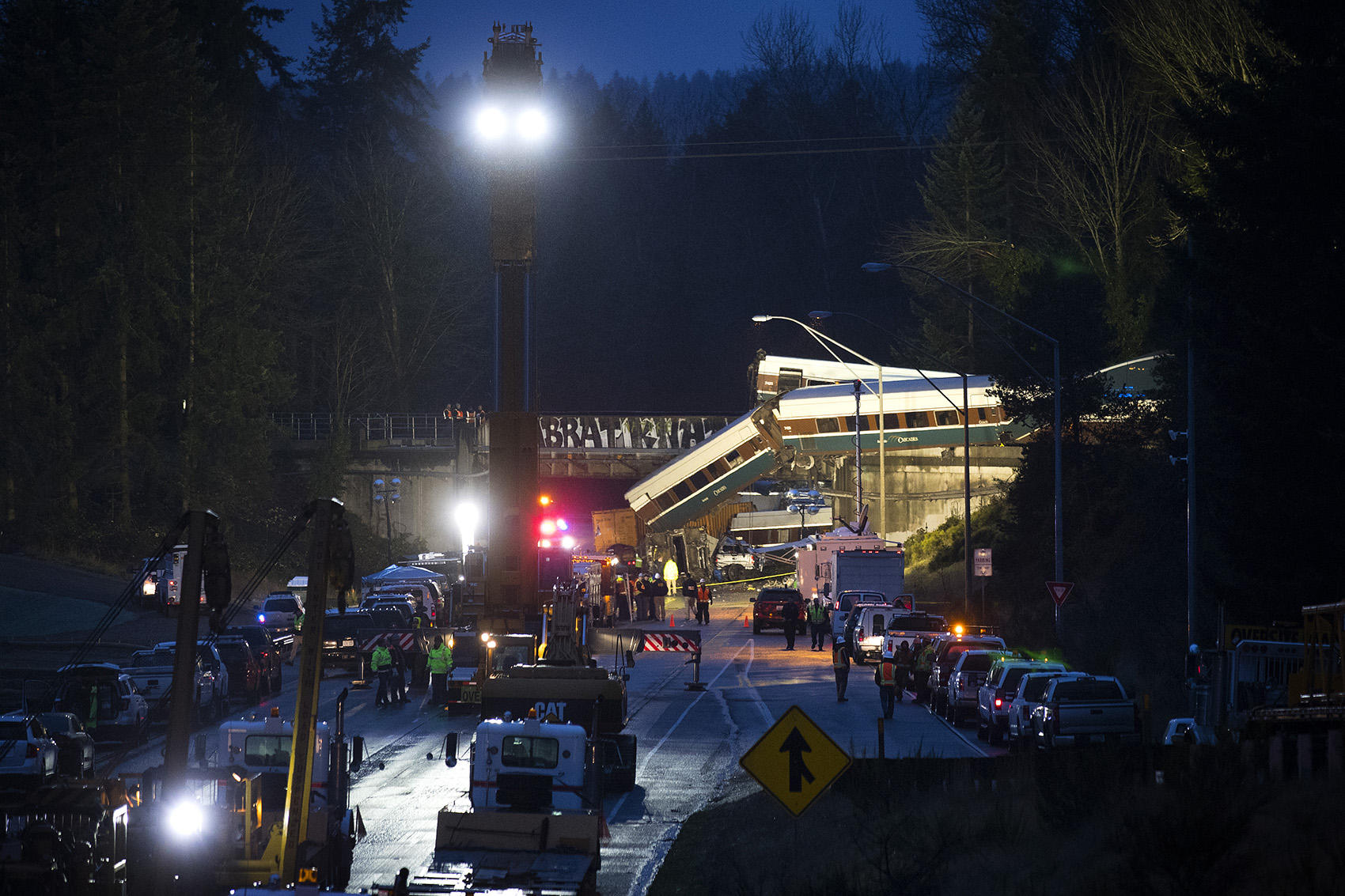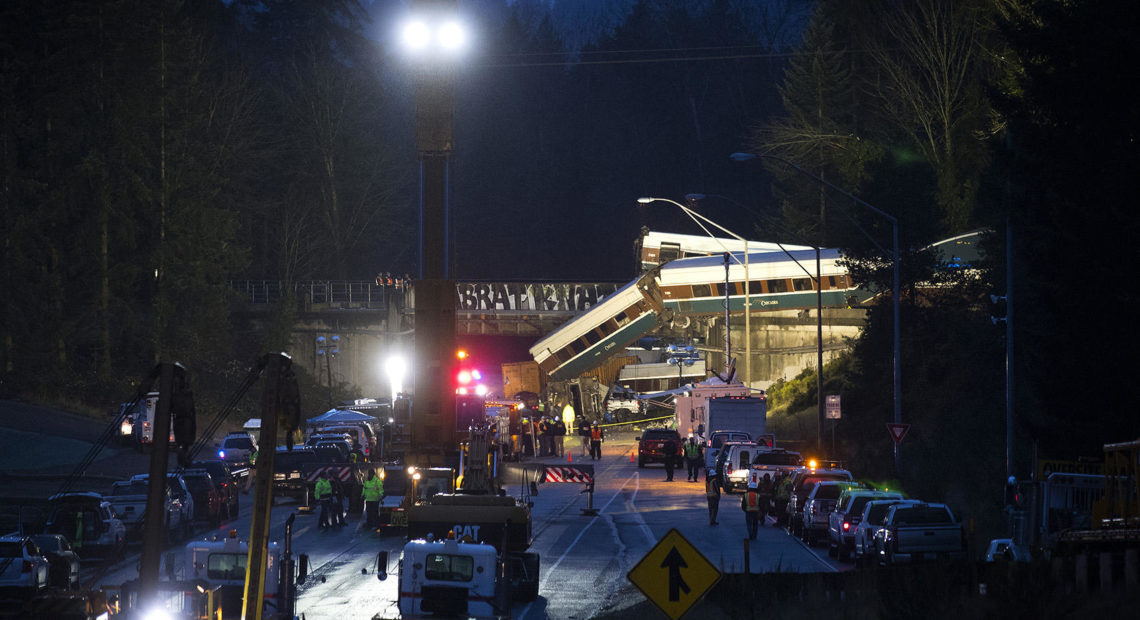
Deadly 2017 Amtrak Wreck Could Have Been Prevented, Feds Conclude
listen
Crew training deficiencies played a crucial role in the deadly 2017 Amtrak train derailment near DuPont, Washington, according to a final report from federal investigators accepted Tuesday by the National Transportation Safety Board.
NTSB board members also had sharp criticism for a quartet of entities involved in the Amtrak Cascades service: train operator Amtrak, track owner Sound Transit, rail service funder Washington State Department of Transportion and the regulatory agency Federal Rail Administration.
“The staff has identified failures up and down the line,” said NTSB chair Robert Sumwalt. “Could this accident have been prevented? The answer is a resounding yes. Three people did not have to die. Fifty-seven others on board the train, and eight in highway vehicles, did not have to suffer injuries. None of us had to be here today.”
The meeting to wrap up the crash investigation came a year and a half since Amtrak Cascades Train 501 hurtled off the tracks near DuPont, Washington, midway through its inaugural run on a new, faster routing alongside Interstate 5. The train traveling from Seattle to Portland derailed at 78 mph on a sharp curve that had a posted speed limit of 30 mph.
Sumwalt went easy on the locomotive engineer whose failure to slow the train before the curve was the immediate cause of the crash on December 18, 2017.
“He made a mistake,” Sumwalt said. “To err is human. We all make mistakes. So we have to allow for the mistake and put in place redundancies so that when somebody does commit a human error that mistake is trapped before it becomes consequential.”
“The engineer was set up to fail,” Sumwalt continued. “He was let down by Amtrak who provided insufficient route familiarization.”
“He was let down by Sound Transit who provided ineffective mitigation of the hazardous curve, by Washington State Department of Transportaton by their decision to start revenue service without ensuring that the risk had been sufficiently mitigated.”
The NTSB staff and board criticized the joint decision by the train service partners to start service on the new routing without having an automated safety braking technology in operation called Positive Train Control, which would have intervened to prevent the wreck.
The NTSB board members adopted more than 30 safety recommendations based on findings from the crash investigation. The safety agency said Amtrak needs to revise training procedures to make sure crews have more experience operating in new territories or on new trains and get tested under day and night conditions. The NTSB also recommended “enhanced wayside signage” to help crews identify their location.
Since the crash, Amtrak and its partners have activated Positive Train Control on all passenger services in the Pacific Northwest.
The four-member NTSB board met in Washington, D.C., Tuesday afternoon to question federal investigators about the final report and then voted to adopt the findings and safety recommendations.
Portland-based locomotive engineer Steven Brown repeatedly told investigators and his union rep that he would not have taken the controls if he felt unqualified to safely drive the train that morning.
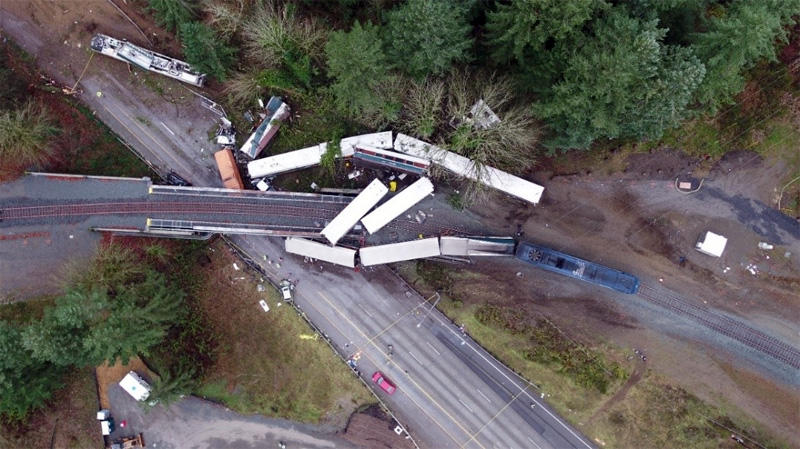
Amtrak Cascades Train 501 was going more than twice the posted speed limit when it derailed at a sharp turn near DuPont, Washington, on December 18, 2107. CREDIT: WASHINGTON STATE PATROL
Brown started working for Amtrak in 2004 and became an engineer in 2013. He told NTSB investigators that he received two nights of familiarization training on a new locomotive and the new territory at the same time. He said he was at the throttle for two northbound practice runs and one southbound run on the new routing.
Brown said all of the crew members in his training group learned about and noted the sharp curve south of DuPont where the derailment would later occur.
“Everybody hated that curve,” Brown said in an interview with the investigation team last year. “Everybody was concerned about the curve.”
Brown said he knew he needed to slow down about a mile ahead of the curve, but didn’t see a speed limit or mileage marker to alert him to apply the train’s brakes.
“The only thing I can think is that I was possibly quickly looking at a gauge or something and missing the sign,” Brown said. “I was getting ready to set the brake and then I realized that, when I saw the 30-mile-an-hour speed sign at the beginning of the curve, that I was not where I thought I was.”
A detailed read-out of the locomotive cab video recorder noted a series of trackside milepost and speed limit signs ahead of the curve. In video screen grabs, the signs appear small and flash by in the periphery of the view out the windshield. One second before the derailment, as Brown realized what was about to happen, the engineer can be heard on the voice data recorder saying, “Aww, we’re dead.”
Amtrak Cascades and Coast Starlight passenger service reverted to the previous waterside route on the congested BNSF mainline between Tacoma and Olympia after the 2017 wreck on the Point Defiance Bypass.
WSDOT’s Rail Division wants to return to the faster routing alongside I-5, but the timeline for the resumption of that service is now more uncertain.
“We are just learning the final recommendations & will be reviewing them in detail,” the state agency said in a tweet Tuesday. “Over the next few weeks, all the agencies involved will work together to determine next steps for Amtrak Cascades service.”
In an emailed statement, track owner Sound Transit said it has taken several actions to increase safety in the corridor between Tacoma and Nisqually.
“Sound Transit has already worked with partners to implement graduated speed limits and supplementary signs as well as crew communications requirements, as the NTSB today recommended,” the statement sent by spokesman Scott Thompson said.
Amtrak also emailed a statement Tuesday detailing a variety of steps it has taken at a national level to improve training and instill a proactive safety culture.
The deadly derailment happened on what was to be the first day of more frequent Amtrak service between Seattle and Portland. Washington state was all set to subsidize six daily roundtrips — up from four — using the new, faster bypass route south of Tacoma.
The NTSB board member discussion of the final report raised questions about the crashworthiness of the Talgo Series 6 passenger railcars used on the Amtrak Cascades line. NTSB staff and board members contended that these railcars are unsafe in the event of a high speed derailment. WSDOT, ODOT and Amtrak deploy four Talgo Series 6 trainsets for the Pacific Northwest regional service as well as two Talgo Series 8 trains with a stronger structural design.
“My concern is the safety of these trainsets,” said NTSB member Jennifer Homendy. “We’ve established they have deficiencies.”
The NTSB can only make recommendations — it is not a regulatory agency — but the tenor of the comments suggest Amtrak and WSDOT may need to procure new railcars to increase service frequency, which could take years to carry through. If the Federal Railroad Administration loses confidence in the continued use of the Talgo Series 6 trainsets, even the existing level of service could be called into question.
The conclusion of the NTSB investigation sets the stage for about three dozen lawsuits by crash victims to proceed to trial. Plaintiffs’ attorneys have advanced many of the same arguments as contained in the NTSB final report about an alleged rush to put the bypass routing into service with inadequate crew practice and safety technology.
“We kind of had the bookends of out-of-date and structurally unsafe trains at the same time that you’re having inexperienced — as they said, ‘green-on-green’ — operators operate this track,” said attorney David Beninger of Luvera Law Firm in an interview Tuesday. “So too old and antiquated and too young and inexperienced just made for a terrible, terrible recipe.”
Beninger said his firm is representing about 30 people who are suing Amtrak over injuries or the death of a relative. He said the first jury trials are scheduled to begin in U.S. District Court in Tacoma this September.
Beninger said the NTSB final report provided confirmation of his own analysis that the train crews on duty last December “were set up to fail, not set up to succeed. This was an institutional problem.”
Related Stories:
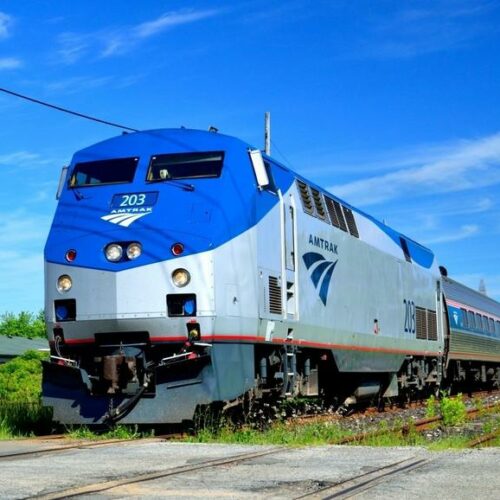
Pandemic-Curtailed Amtrak Service To Be Partially Restored Next Month For Northwest Routes
In another sign of the rebound in travel, Amtrak and the state transportation departments of Oregon and Washington announced plans to restore a good chunk of the passenger train service that was curtailed due to low ridership in the pandemic.
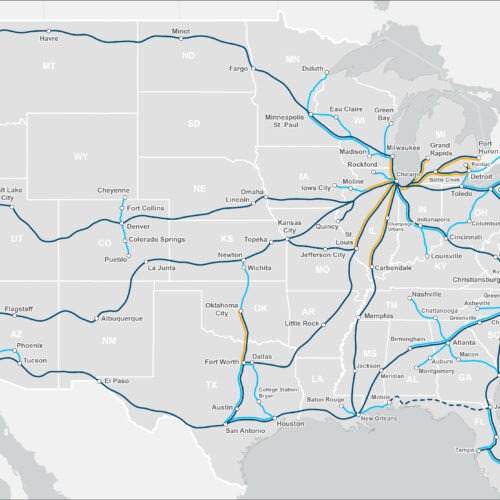
As President Biden Pushes Major Rail Investments, Amtrak’s Proposed 2035 Map Has People Talking
When President Biden unveiled his major new infrastructure plan last week, the proposal included much more than fixing crumbling bridges. And for those who wish America had a more robust passenger train network, it gave them something new: hope.
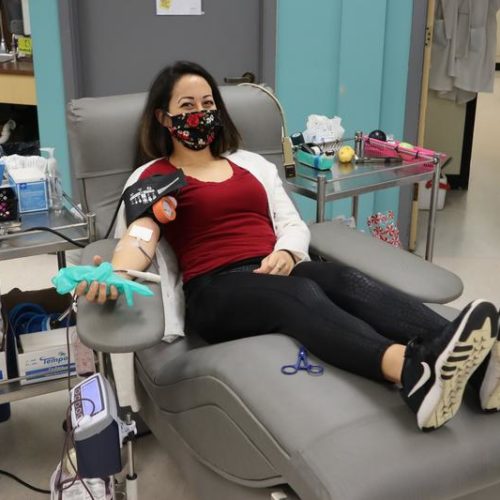
‘I Knew I Needed To Go Out,’ Says Blood Donor Marking 3rd Anniversary Of Deadly I-5 Amtrak Crash
Three years ago on December 18, a speeding Amtrak Cascades train bound for Portland derailed near DuPont, Washington, and tumbled onto Interstate 5. The crash killed three passengers and injured scores of others. An Olympia woman marked the anniversary Friday by going back to her local blood donation center to achieve a related, but happier milestone.

